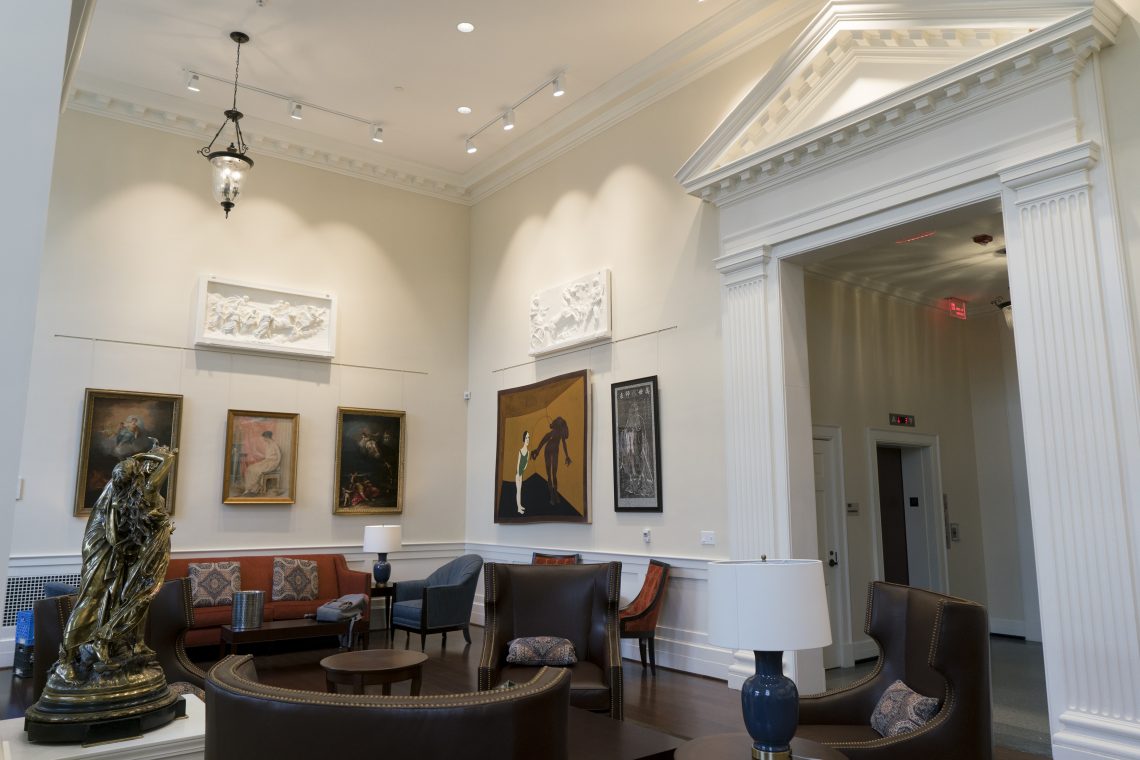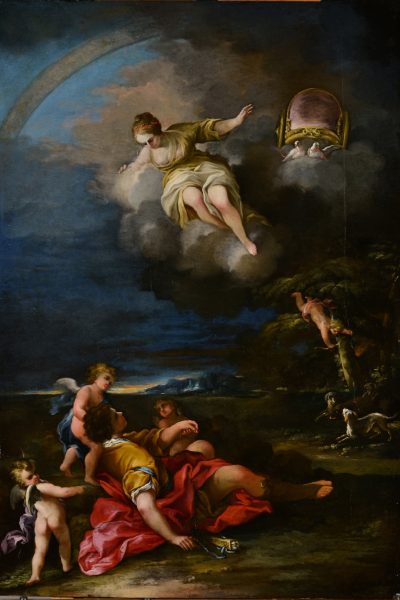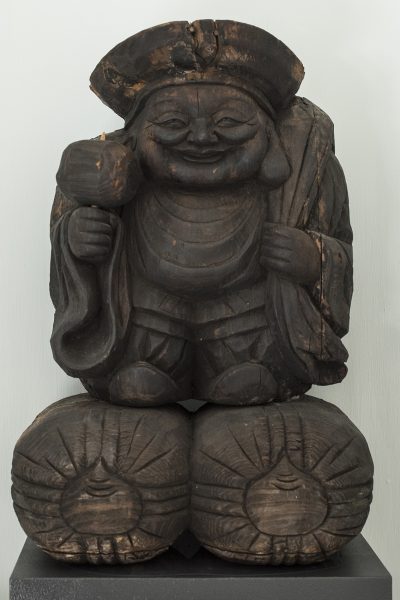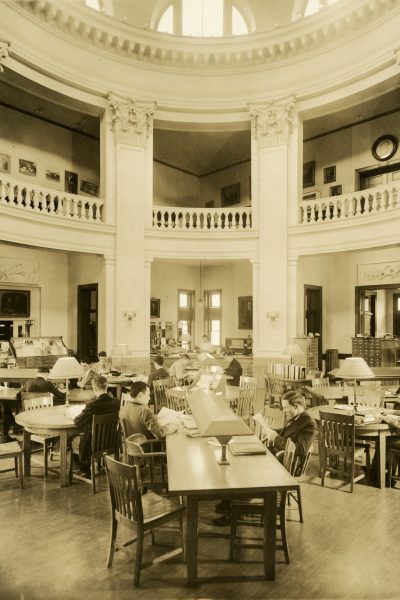The Story Behind the Art After Tucker Hall was restored, University Collections of Art & History worked to find the perfect art to adorn its walls — including four bas-relief sculptures that hung on campus more than 100 years ago.
Last fall, after a thorough restoration, Tucker Hall reopened as the new home for the classics, religion and romance languages departments. University Collections of Art & History (UCAH) was asked to supply artwork for the building’s public areas. Because of special characteristics of the original 1936 building, the renovated space provided exciting and challenging opportunities to display many paintings, prints and sculptures that have long been in storage — including four bas-relief sculptures that hung in the original building more than a century ago.
Tucker Hall was first built as the university’s school of law, replacing a Richardsonian Romanesque-style building that was erected in 1900. The John Randolph Tucker Memorial Building had been controversial from the start because its Victorian appearance did not conform to the Colonnade’s traditional Classical Revival style. A mysterious fire destroyed that rusticated stone structure in December 1934. The new brick Tucker Hall, completed in February 1936, was designed to balance and complement the former Newcomb Library that had been renovated in 1909, providing classical style bookends to the Colonnade.
The March-April 1936 edition of the W&L Alumni Magazine was devoted to extolling the virtues of the new building. Singled out in one article was the octagonal entrance foyer fitted with corner niches to hold statues of former deans. Also described at length was the two-story law library that spanned the full width of the opposite end of the building. Law professor Charles P. Light Jr. lauded it as “a room of majestic proportions,” filled with light from large Georgian-style windows and boasting beautifully carved pediments and ornamental pilasters.
Forty years later, in 1976, the university completed construction of Lewis Hall, allowing the W&L School of Law to move to its third home. To accommodate the language and psychology departments, as well as the new computer center, the university remodeled Tucker Hall. Renovations included suspending a mezzanine in the middle of the two-story library and creating an additional floor to accommodate the need for more offices. The 2017 renovation of the building removed that mezzanine and returned the former law library to its original two-story splendor.
Today, Tucker Hall’s octagonal entryway and the old library, now the Lemon Reading Room, are fitted with pieces from the university’s museum-quality art collection, which began with a gift of significant early American portraits bequeathed by William Newton Mercer in 1875. Since that time, the collection has expanded to include 13,000 objects that date from antiquity to the present, including the history and ceramics collections.
The four niches in the entryway of Tucker Hall now hold a pair of late 19th-century marble copies of classical busts of Venus and Apollo, as well as a pair of 19th-century carved wood figures of Japanese mythological figures or deities. As with all art displayed throughout the building, these original objects are visual resources for interdisciplinary teaching, learning and research.
In the Lemon Reading Room, students are surrounded by original works of art. Hanging from the picture rails are paintings that range in date from the early 18th to the mid-20th centuries, illustrating stories and topics in classical mythology, world religions, European culture, and art of Latin America. These are seemingly disparate pieces, but they are related by themes that cross disciplines and illustrate cultural connections, hanging together in a single space and interacting with each other in unexpected ways. Sculptures in the room include a copy of the “Dancing Faun” from ancient Pompeii and a 19th-century bronze interpretation by Jean-Louis Gregoire of the myth of Perseus and Andromeda.
Most exciting for the UCAH staff has been the installation of four bas-relief sculptures that were found in storage in need of conservation. An early photograph of the university’s Carnegie Library, opened in 1908, reveals two of the low relief sculptures installed above the transoms of doors off the alcoves that surrounded the library’s large central reading room. In this photo, an art gallery, endowed in 1884 with a bequest by Philadelphia lawyer and art collector Vincent L. Bradford and moved from the old Newcomb Library, inhabits the second floor of the rotunda. These remained in place for just over 30 years before the library was reconstructed in 1940. Renamed the McCormick Library, it was “not an expansion of the old one, but … actually a new library with the old one serving as a central core unit,” according to a December 1940 article in the W&L Alumni Magazine.
The central rotunda and dome were removed to make room for additional stacks, and the bas-relief sculptures were apparently placed in storage. As time passed, knowledge about the sculptures was lost — until the chance examination of the Carnegie Library photograph in 2016. Because of their classical themes, it was logical that the sculptures be conserved and installed in the new Tucker Hall reading room.
While cleaning the sculpture “Aurora,” object conservator Russell Bernabo found a maker’s mark for the Boston Sculpture Company that provides clues about the origin and date of the bas-relief. Located in Melrose, Massachusetts, at the turn of the 20th century, the Boston Sculpture Company was one of several firms that inexpensively reproduced plaster casts of well-known works of art for display in libraries, schools and homes. A 1909 catalog of the company claimed it was the largest importer and creator of plastic reproductions from the ancient, medieval, and modern sculpture. These were used not only for decoration, but also as teaching tools in a time before 20th-century slide projectors and 21st-century digital images.
All four sculptures from the Carnegie Library are illustrated in that 1909 catalog, and titles and identifications of our works have been verified. The dimensions of “Aurora,” a copy of a painting by Renaissance artist Guido Reni, match those exactly in the catalog. The original cost of the 30” x 61” cast was $25.
Artworks in Tucker Hall are not confined to the Lemon Reading Room, but are placed throughout the public spaces of the building. Those paintings and prints on the first floor indicate the home of the Classics Department, while the second floor includes works that support the Religion Department, and the third floor is supplied with works related to romance languages. All this confirms and supports the fact that first-hand study of original art is an indispensable part of a liberal arts education.
 The newly renovated Tucker Hall space provided exciting opportunities to display many paintings, prints and sculptures that have long been in storage.
The newly renovated Tucker Hall space provided exciting opportunities to display many paintings, prints and sculptures that have long been in storage. “Venus Beholding the Death of Adonis” hangs in the Lemon Reading Room. Unknown artist (probably Italian). Oil on panel, early 18th century.
“Venus Beholding the Death of Adonis” hangs in the Lemon Reading Room. Unknown artist (probably Italian). Oil on panel, early 18th century. This 19th-century Japanese sculpture, “Daikoku,” stands in the Tucker Hall entryway.
This 19th-century Japanese sculpture, “Daikoku,” stands in the Tucker Hall entryway. An early photograph of the university’s Carnegie Library, opened in 1908, reveals two of the low relief sculptures installed above the transoms of doors off the alcoves that surrounded the library’s large central reading room.
An early photograph of the university’s Carnegie Library, opened in 1908, reveals two of the low relief sculptures installed above the transoms of doors off the alcoves that surrounded the library’s large central reading room.
You must be logged in to post a comment.